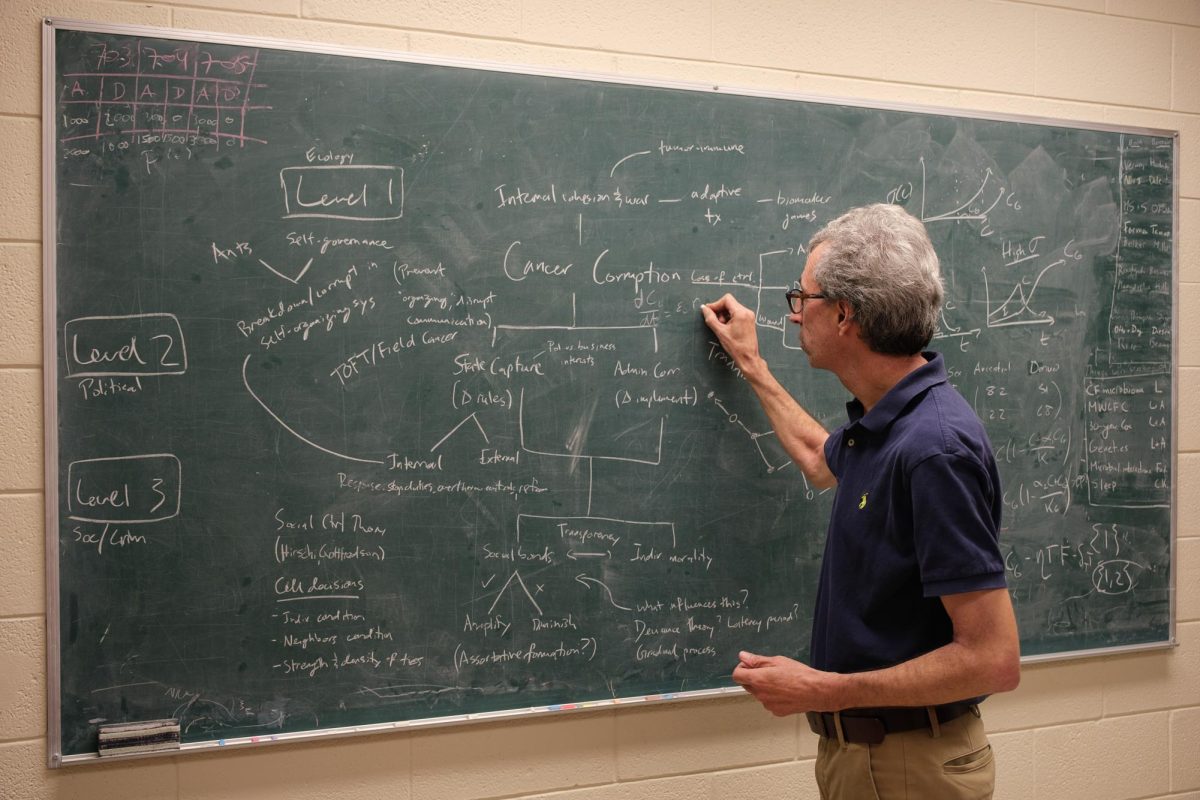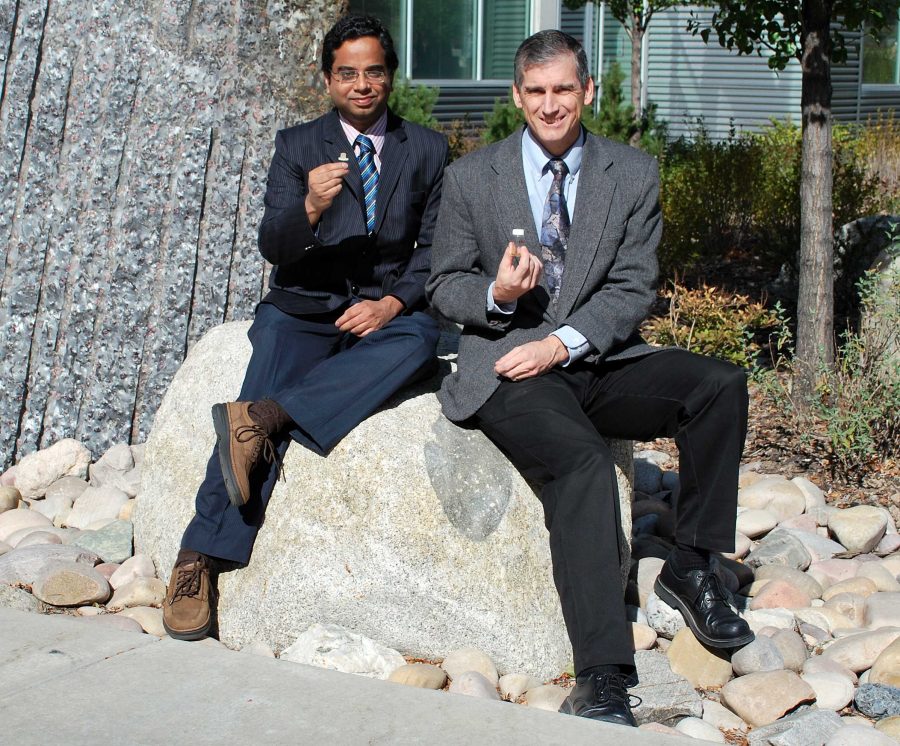You gonna finish your lunch? If not, you might want to take it to the engineering building because U researchers have discovered a way to manufacture LED lights from leftover food and drinks.
Professors Prashant Sarswat and Michael Free published their method on Oct. 1, using leftover bits of tortilla and old soda from the Union food court for their experiment.
Many LEDs require quantum dots, or microscopic crystals, to produce and give color to the light. It is possible to make quantum dots from carbon, a common element found in food and drinks. These dots are less than 20 nanometers wide, or less than a thousandth of the width of a single human hair. Free compares the dots producing light to a white shirt glowing under a black light. By fine-tuning the dots, they can produce a wide variety of different colors.
The process begins, Sarswat said, with “collecting the waste, processing the waste and creating carbon dots using solution-based techniques.” This waste is processed in a solvent and exposed to pressure and heat until carbon dots are produced. Researchers then embed the dots in a type of epoxy for use as LEDs.
Drinks are easier to work with than food, which requires additional processing to filter out unwanted particles. An average soda is an ideal source, thanks to the high concentration of sugars.
“For a can’s worth of waste soda, you could probably make quite a few LEDs,” Free said. “Tens, maybe even hundreds — it depends on how powerful, how big the type of LED you want.”
In the abstract for their report, the two researchers write the “utilization of waste as a resource for material synthesis is an environmentally responsible approach.” In addition to preventing food waste, the process also requires fewer hazardous materials. Traditional manufacture of quantum dots requires lead or cadmium selenide, a toxic metal.
“There are costs. For cadmium selenide I need to invest more,” Sarswat said. “But if I use carbon dots from waste I am serving two purposes — one is using less money and another utilizing waste.”
The United States generated 133 billion pounds of food waste in 2010. The U.S. Department of Agriculture estimates that 30 to 40 percent of the food supply is wasted, and the U is no exception.
University Dining Services is already working to reduce food waste. The Union uses 500 pounds of waste every week by composting it at the Edible Campus Gardens and sending it to Utah farms. The Peterson Heritage Center dining hall has contracted with a company to compost roughly 300 pounds of food waste every week. Sarswat and Free believe that even more food waste could go to good use.
The two have done their research without any grant money. The pair hopes their initial findings will encourage funding. With additional money, they would like to manufacture a prototype device, such as a small display screen built from their carbon dots. Both researchers work in the Department of Metallurgical Engineering at the U and have been conducting their research for about six months.
@mbatman72

















